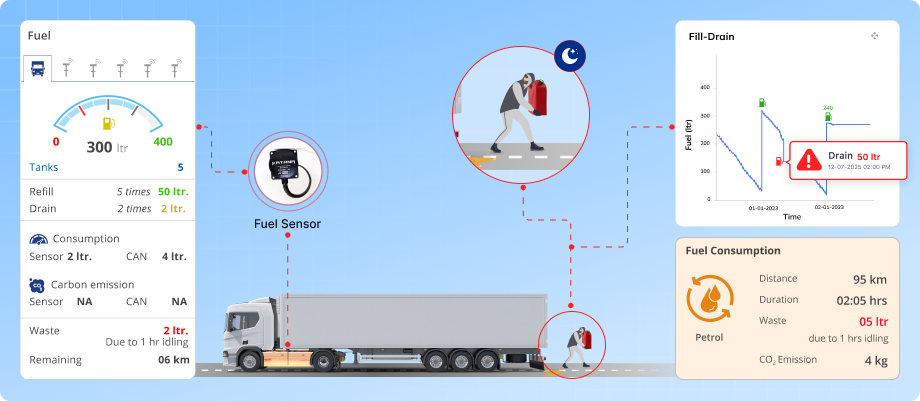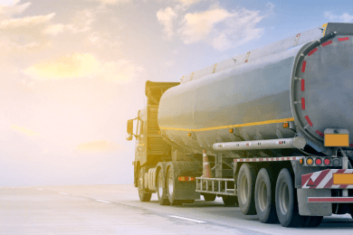Optimizing fuel usage in the United States through fuel management
Introduction
In the United States, fuel is one of the largest operating expenses for commercial fleets. With prices fluctuating across states and misuse going unnoticed, companies are under growing pressure to monitor fuel use more accurately. From regional haulers to nationwide logistics operators, fuel management has become essential to control costs, detect theft, and improve mileage efficiency.
Challenges
- No live visibility into on-road or on-site fuel activity: Fleet operators often have no way to know when, where, or how much fuel is being refilled or lost. Whether a truck is on a long interstate haul or stationed at a local job site, the absence of real-time tracking creates gaps in control and accountability.
- Frequent cases of fuel theft during idle hours or overnight parking: In many US regions, especially where vehicles rest overnight at unsecured locations or remote work zones, fuel theft is a growing concern. Without automated drainage detection, such incidents go unnoticed until fuel levels seem suspiciously low or costs spike.
- Mismatch between fuel-filled and vendor bills: When drivers use third-party fuel stations, there’s no direct validation of how much fuel actually goes into the tank versus what’s shown on the receipt. This often leads to overbilling or incorrect entries, creating friction between vendors, drivers, and managers.
- Different fuel usage for similar routes and vehicle types: A common issue across regional and interstate operations—two similar trucks running similar distances may show completely different consumption. Without data on driving behavior, route type, or load impact, managers are left guessing what caused the inefficiency.
- Unreliable readings due to uncalibrated tanks or complex fuel systems: US commercial vehicles often come with custom or auxiliary tanks, especially in logistics or construction. Poor calibration or lack of tank profiling results in irregular fuel readings, making it hard to trust the system or take action based on the data.
Solution
- Track every refill and drain event in real time: The software is integrated with fuel sensors to capture each fuel movement instantly. Whether it’s a highway refill or fuel drained at a site, you get location-tagged, time-stamped records to monitor all activity as it happens.
- Receive alerts for unusual fuel drops or nighttime drainage: Fuel monitoring detects sudden or suspicious fuel drops and sends immediate alerts. This helps managers act quickly if fuel is stolen during off-hours or when vehicles are unattended.
- Digitally match fuel filled with location and volume: Each refueling event is recorded with volume, date, time, and GPS location. This allows managers to verify every external refill against bills and spot any mismatches instantly, eliminating the need for manual verification.
- Analyze fuel consumption by route, region, and vehicle: The system provides reports showing how much fuel is used per route, trip, or state. Managers can spot inefficiencies caused by bad roads, heavy loads, or irregular driving behavior and optimize accordingly.
- Support for multi-shape tank calibration and sensor accuracy: The software allows customized tank profiling for trucks with auxiliary or non-standard tanks. With proper calibration and sensor integration, fuel readings remain consistent and trustworthy, no matter the tank type.
Results
- Fuel cost savings of up to 20% across the fleet: With real-time tracking and theft detection, companies reduced fuel wastage, unauthorized usage, and billing errors, leading to measurable cost savings.
- Improved trust and transparency in refueling operations: Automated logs with exact refill details helped resolve disputes with drivers and vendors, building stronger accountability and reducing manual workload.
- Better route and driver efficiency with data-backed decisions: Fuel usage analytics helped managers identify high-consumption routes and underperforming vehicles, enabling more efficient planning and driver assignment.




